Your bedroom should be a sanctuary, a place of peace and rest. Often, however, it transforms into a catch-all for laundry, forgotten items, and general clutter. If your bedroom feels more like a storage unit than a serene retreat, you are not alone. Many busy homeowners, renters, and apartment dwellers struggle with maintaining order in their most personal space. The good news: you can achieve a remarkable transformation in just one weekend. This practical, encouraging guide provides a clear, room-by-room plan to help you reclaim your space, create a calming environment, and implement realistic systems for lasting order. Prepare to tackle your bedroom declutter project with confidence and achieve noticeable results by Sunday evening.
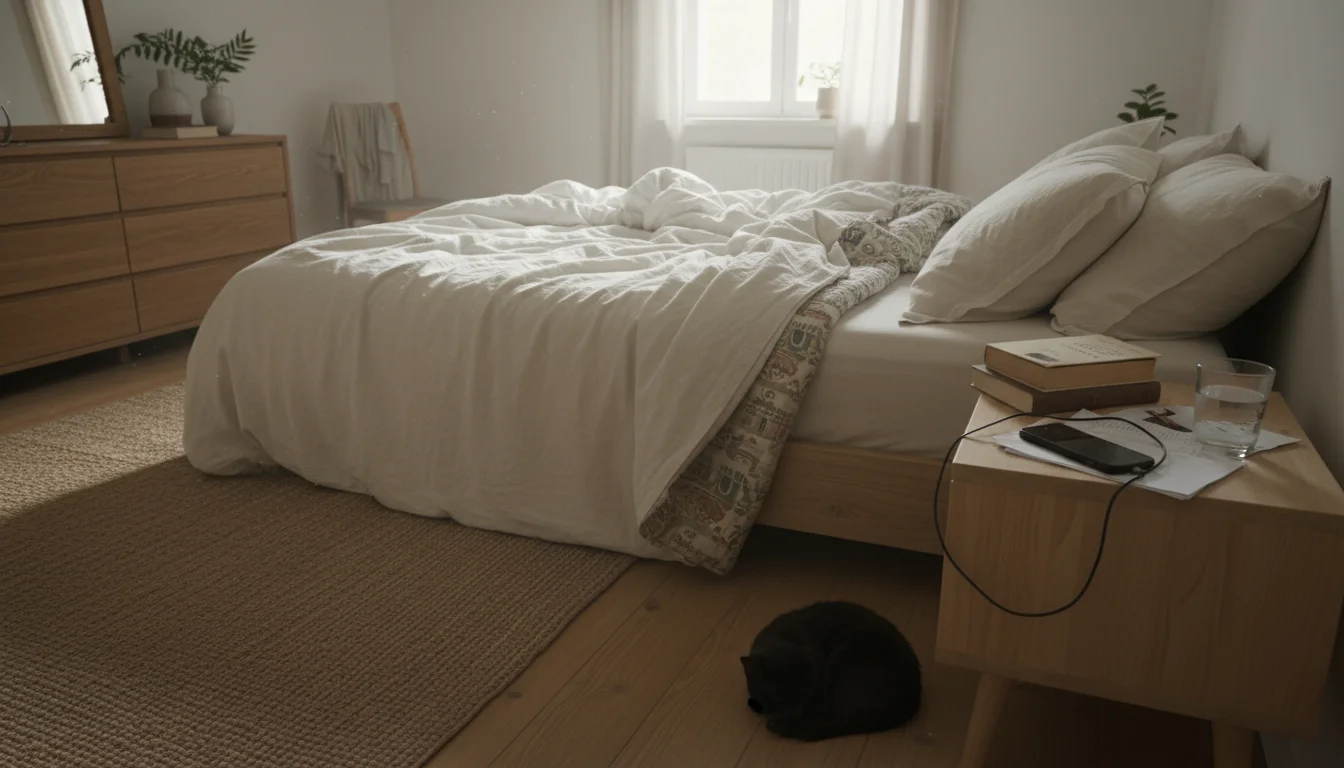
Why Your Bedroom Needs a Weekend Declutter
A cluttered bedroom does more than just look messy; it can significantly impact your well-being. Studies show that disorganized environments contribute to increased stress and anxiety. When you enter a room filled with visual noise, your brain works harder to process it, making relaxation difficult. A successful bedroom declutter provides a tangible sense of accomplishment, reduces mental fatigue, and promotes better sleep. Imagine waking up in a clean, organized space where you easily find what you need and feel genuinely at ease. This is the power of an organized bedroom, transforming your personal retreat into a true haven.
Beyond mental benefits, a decluttered bedroom also offers practical advantages. Less clutter means less dust accumulation, which improves your indoor air quality. Dust mites thrive in textiles and clutter, potentially exacerbating allergies. The Environmental Protection Agency offers valuable resources on maintaining healthy indoor air quality. By clearing out unnecessary items and regularly cleaning, you create a healthier living environment. Furthermore, an organized space makes daily routines smoother, saving you precious time each morning and evening. No more frantic searches for matching socks or your favorite shirt.
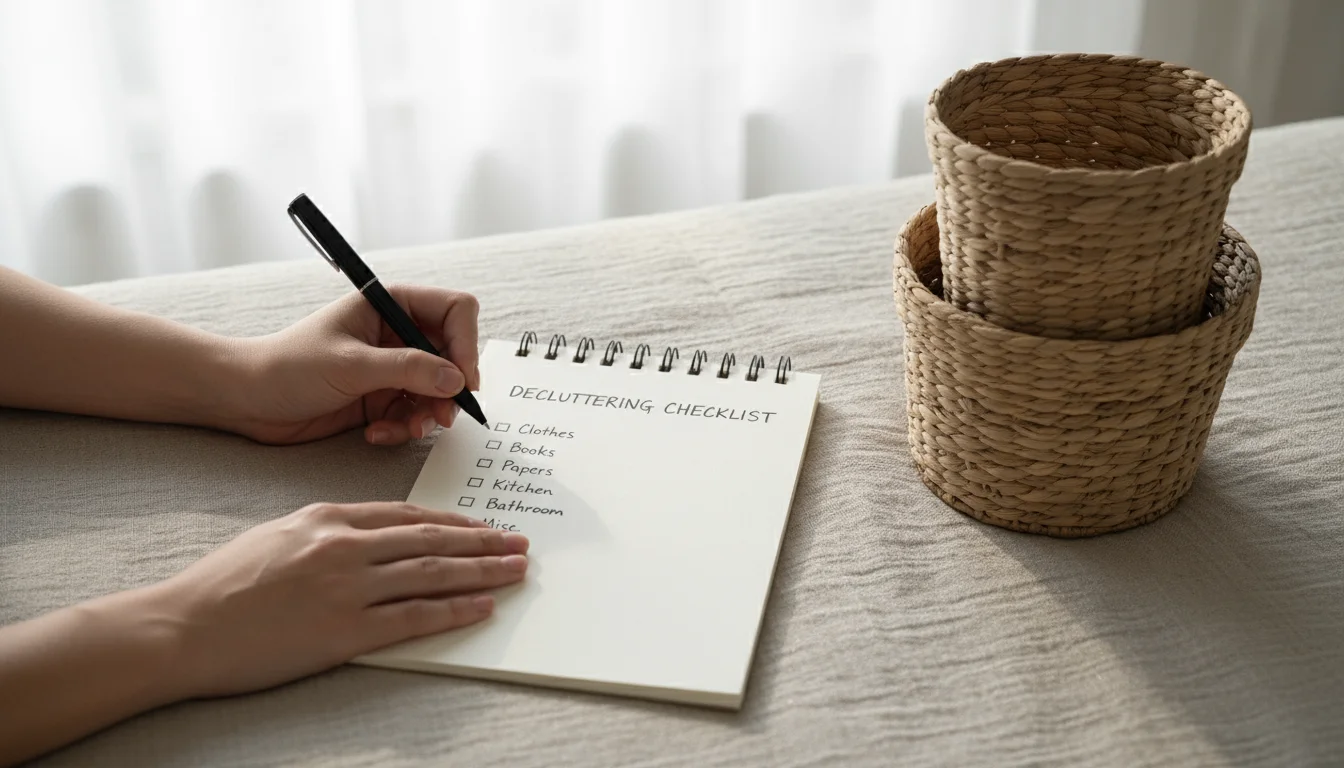
Setting the Stage: Your Weekend Declutter Blueprint
Success in any weekend declutter project begins with preparation and a realistic mindset. This is not about perfection, but about progress. Aim for a “good enough” result that significantly improves your space and sets you up for easy maintenance. Think of this as a strategic mission to reclaim your bedroom.
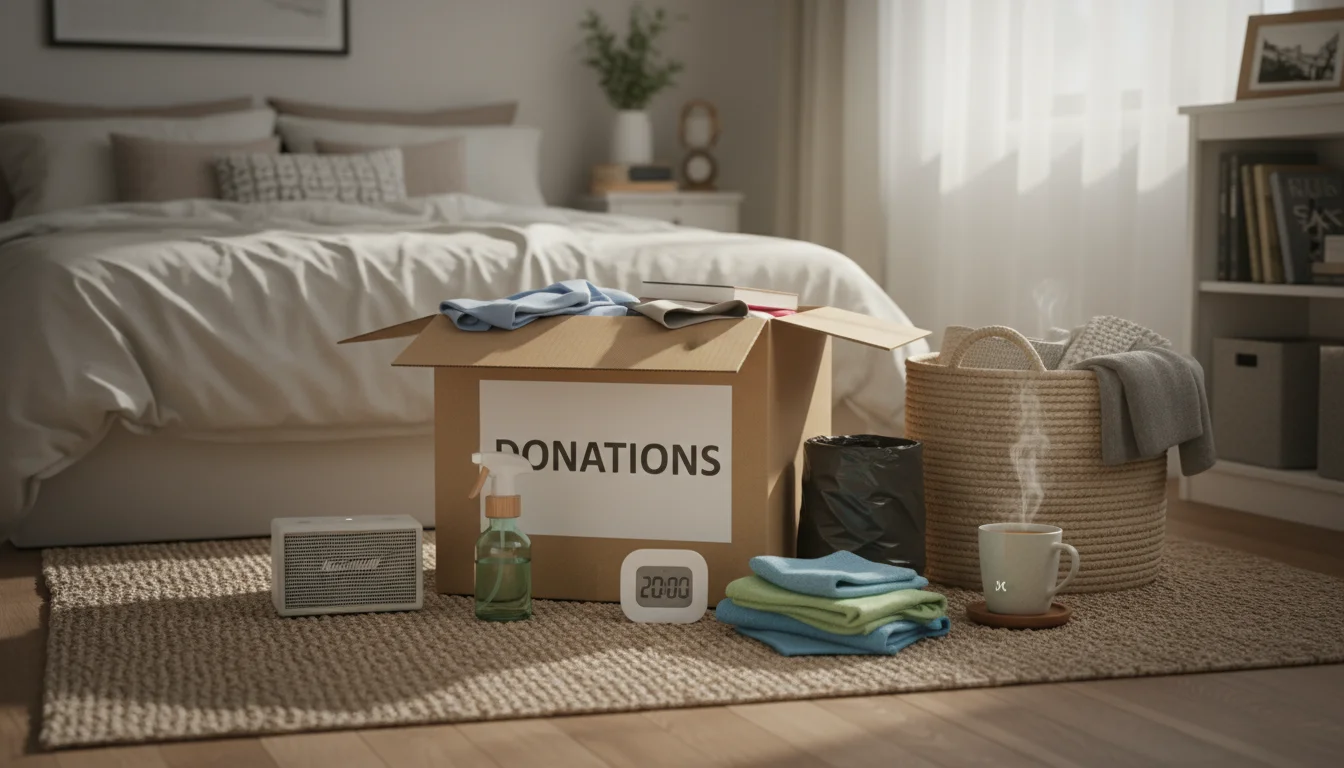
Gather Your Supplies
Before you begin, assemble your tools. Having everything on hand minimizes interruptions and keeps your momentum going:
- Trash Bags: For items destined for the landfill.
- Donation Boxes/Bags: Clearly label these for items you will give away.
- Relocation Baskets: For things that belong in other rooms of your home.
- Cleaning Supplies: Microfiber cloths, all-purpose cleaner, vacuum, or broom.
- A Timer: Essential for staying focused and preventing overwhelm.
- Music or Podcast: Choose something upbeat to keep your energy high.
- Water Bottle: Stay hydrated throughout the process.
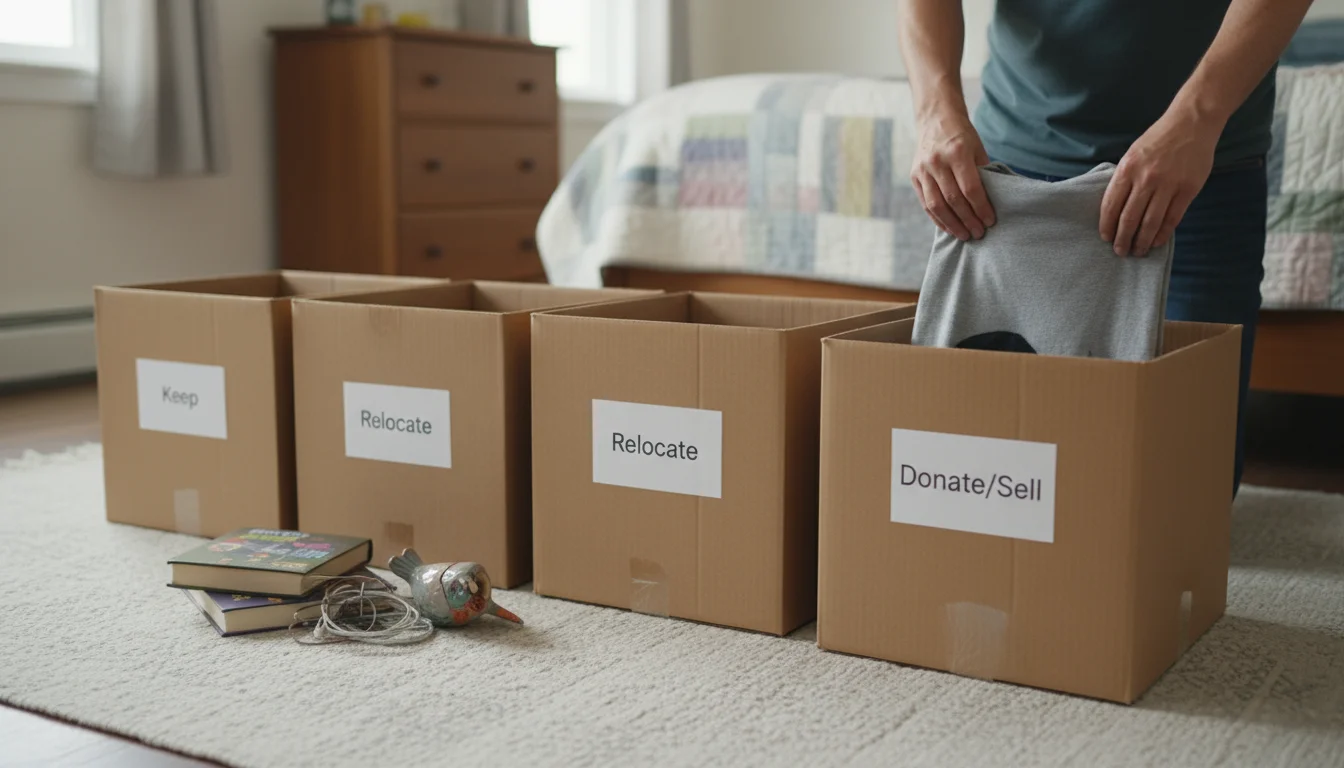
The Four-Box Method for Decision Making
This simple method helps you quickly categorize items. As you go through each zone, assign every item to one of these categories:
- Keep: Items you use, love, and need in your bedroom.
- Donate/Sell: Items in good condition that you no longer want or need.
- Relocate: Items that belong in another room of your home.
- Trash/Recycle: Broken, expired, or unusable items.
Commit to immediately removing the “Donate,” “Relocate,” and “Trash” piles from your bedroom once sorted. Do not let them linger, as this creates new clutter.

Your Weekend Timeline: Realistic Time Blocking
This plan breaks down the `bedroom declutter` into manageable chunks, making it a feasible `weekend declutter project`. Remember, these are guidelines; adjust them to fit your energy levels and the amount of clutter you have.
- Friday Evening (1-2 hours): Prep Work
- Clear your bed.
- Gather supplies.
- Mentally prepare.
- Remove any trash currently in the room.
- Saturday Morning (3-4 hours): Closet Command Center
- Focus intently on clothing, shoes, and accessories.
- Saturday Afternoon (2-3 hours): Dressers and Nightstands
- Tackle drawers and immediate bedside surfaces.
- Sunday Morning (2-3 hours): Under the Bed and Hidden Spots
- Address storage areas, shelves, and overlooked corners.
- Sunday Afternoon (2-3 hours): Surfaces, Decor, and Final Touches
- Clear surfaces, dust, vacuum, and enjoy your new space.
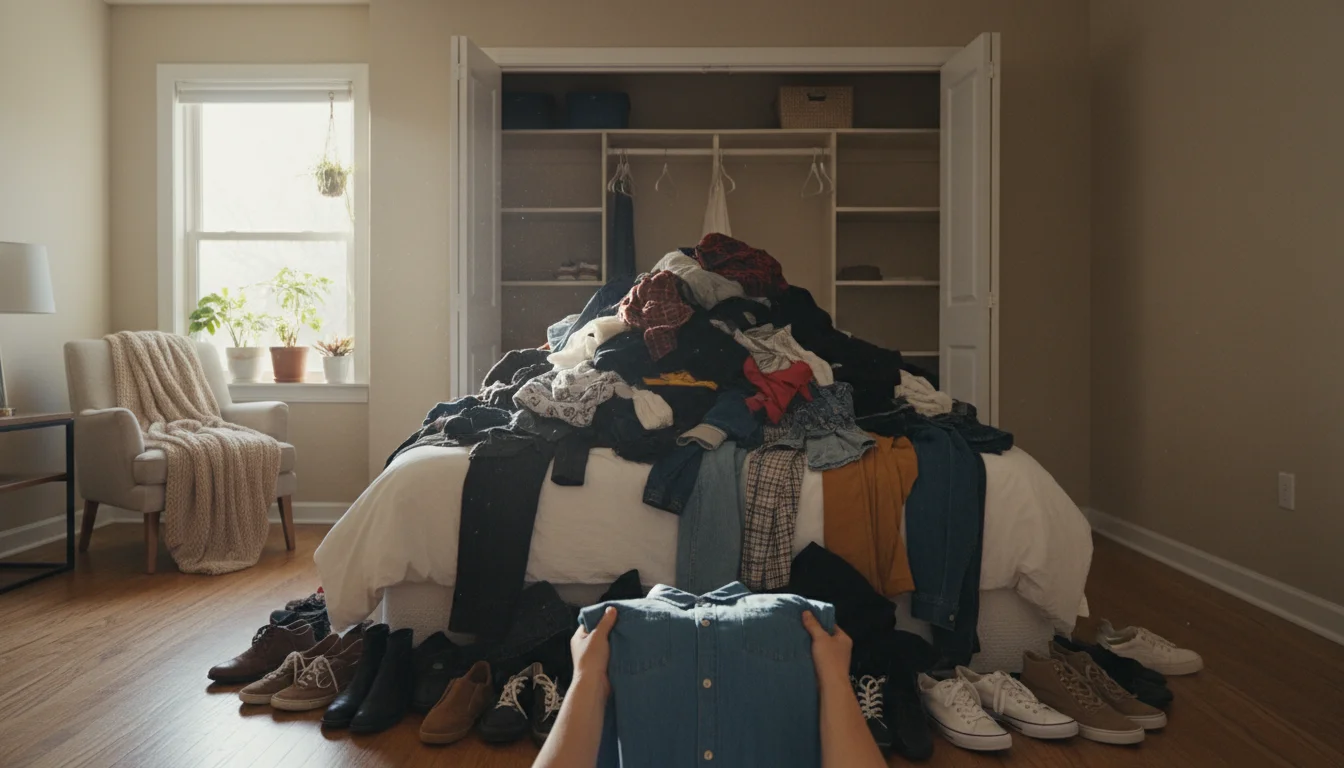
Day 1: Saturday Morning – The Closet Command Center
Your closet often holds the most significant volume of items. Tackling it first gives you a powerful head start on your `organizing bedroom` goals. Remember, this is a deep dive, so commit to pulling everything out.
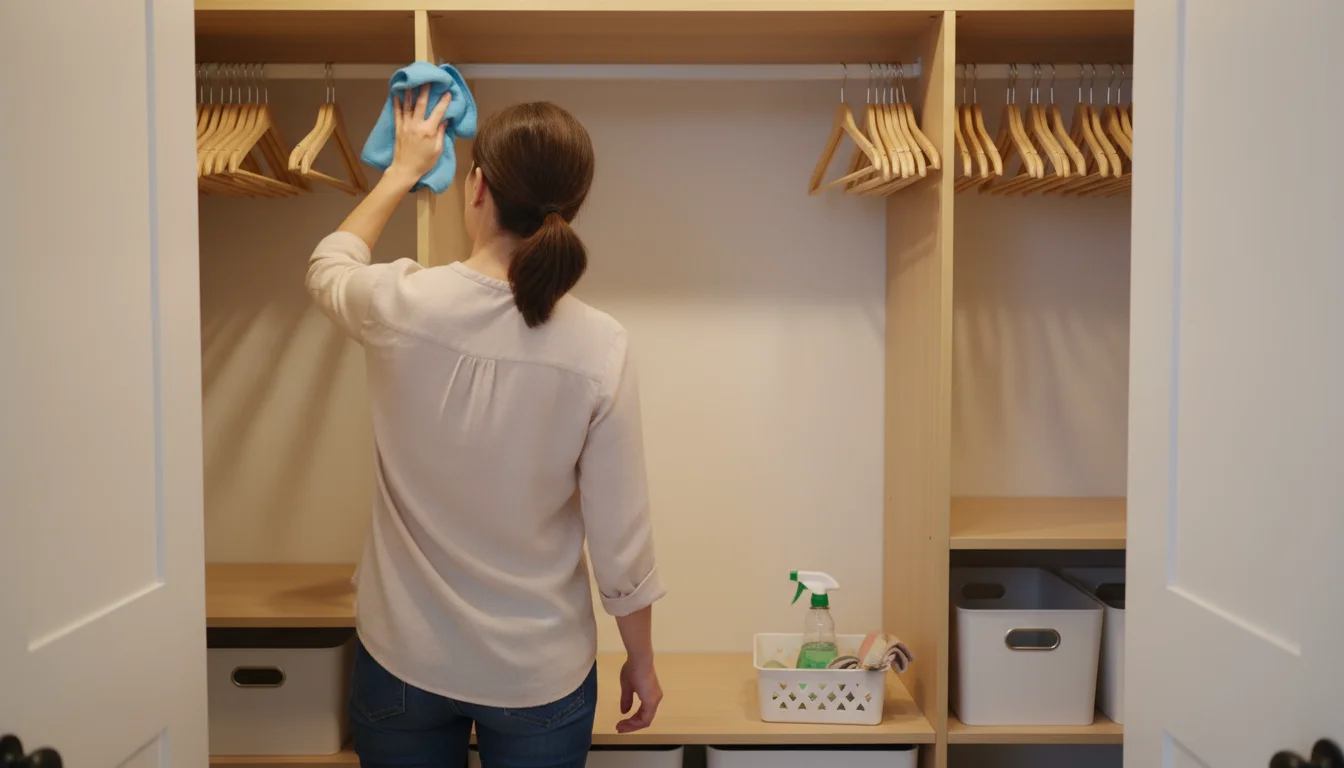
Step-by-Step Closet Declutter
- Empty Everything Out: Yes, everything. Pull all clothing, shoes, bags, and accessories out of your closet. Place them on your bed or another clear surface. Seeing the sheer volume often provides motivation.
- Clean the Empty Space: Take advantage of the empty closet. Wipe down shelves, vacuum the floor, and dust any rods. This creates a clean slate for your organized items.
- Sort by Category: Now, go through your pile. Pick up each item and immediately assign it to a “Keep,” “Donate/Sell,” “Relocate,” or “Trash” pile. To make decisions easier, ask yourself these questions:
- “Have I worn this in the last year?” (Seasonal items are an exception, but be honest about their condition and fit.)
- “Does it fit me well and make me feel good?”
- “Is it damaged, stained, or beyond repair?”
- “Do I genuinely love it?”
Be ruthless but practical. You do not need five nearly identical black T-shirts.
- Rehang and Refold “Keep” Items: Put back only the items you decided to keep. Group similar items together (all shirts, then all pants). Consider using consistent hangers for a cohesive, visually calming look. For budget-friendly options, basic slimline velvet hangers save space and prevent clothes from slipping. Fold items neatly in drawers or on shelves, employing vertical folding techniques to maximize space and visibility.
- Store Shoes and Accessories: Designate specific spots for shoes and accessories. Use clear shoe boxes, over-the-door organizers, or simple shelves to keep them tidy and accessible. Avoid leaving shoes in a pile on the floor, as this quickly creates new clutter.
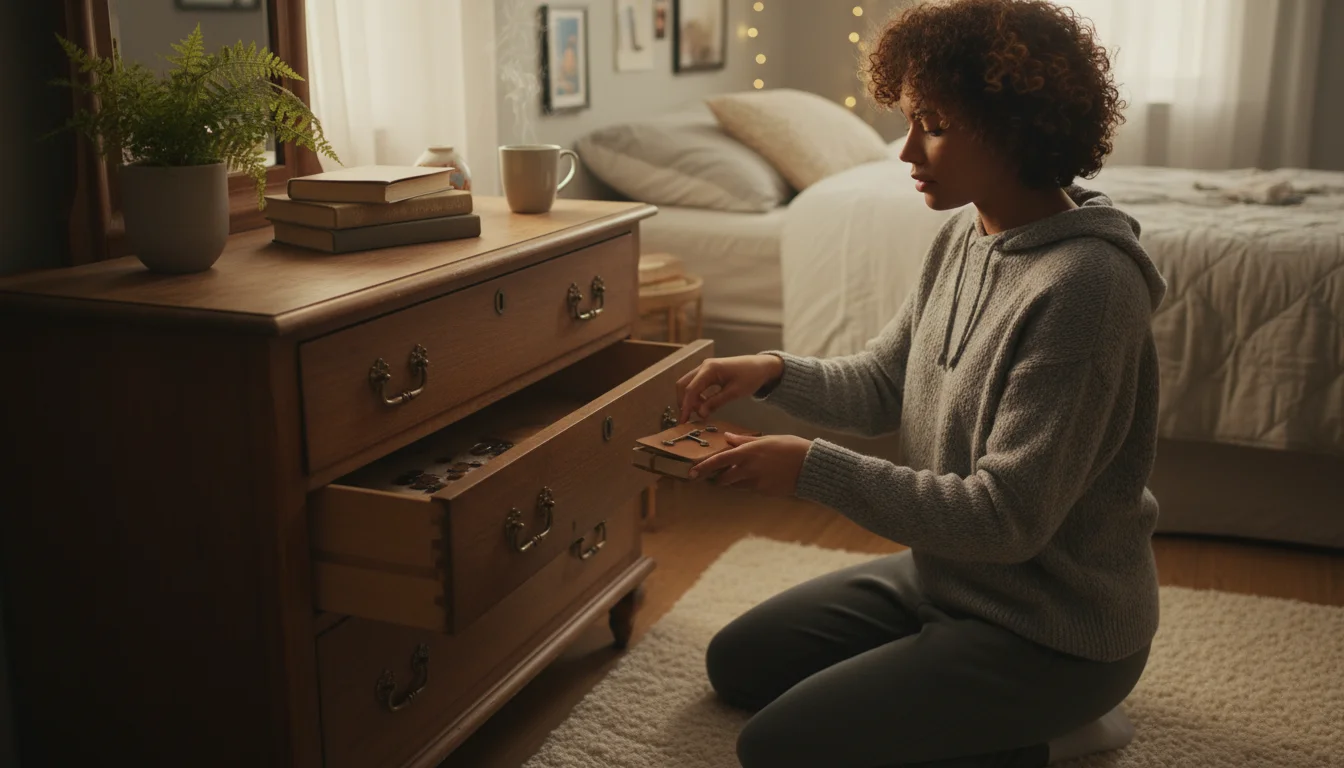
Day 1: Saturday Afternoon – Dressers and Nightstands
After conquering your closet, move to the smaller but equally important areas: your dresser drawers and nightstands. These areas often become unintentional catch-alls for items that lack a proper home.
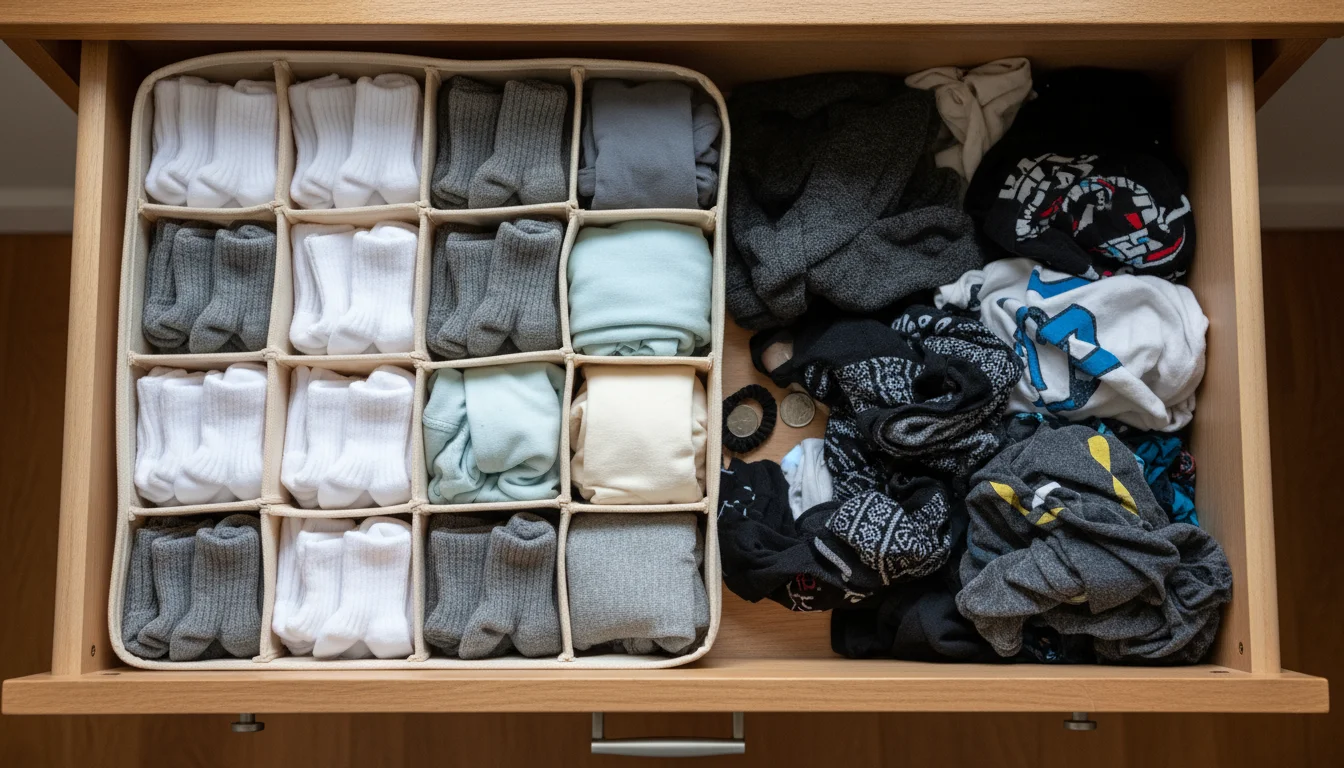
Decluttering Dresser Drawers
Treat each drawer like a mini-project. Empty one drawer at a time onto a clear surface. Sort through its contents using the “Four-Box Method.”
- Socks and Underwear: Discard stretched-out socks, lone socks without a mate, or underwear past its prime. Fold remaining items neatly, keeping pairs together. Drawer dividers or small bins are excellent, budget-friendly tools for maintaining order here, turning messy drawers into organized “zones” for specific items.
- Pajamas and Loungewear: Keep only what you genuinely wear and find comfortable. Fold or roll them for easy access.
- Activewear: If you store activewear in your dresser, ensure all items are clean and in good condition. Remove anything you no longer use for your workouts.
- Miscellaneous: Dresser drawers can sometimes hide random items like old receipts, batteries, or forgotten jewelry. Give these items a proper home, whether it is in a different room or the trash.
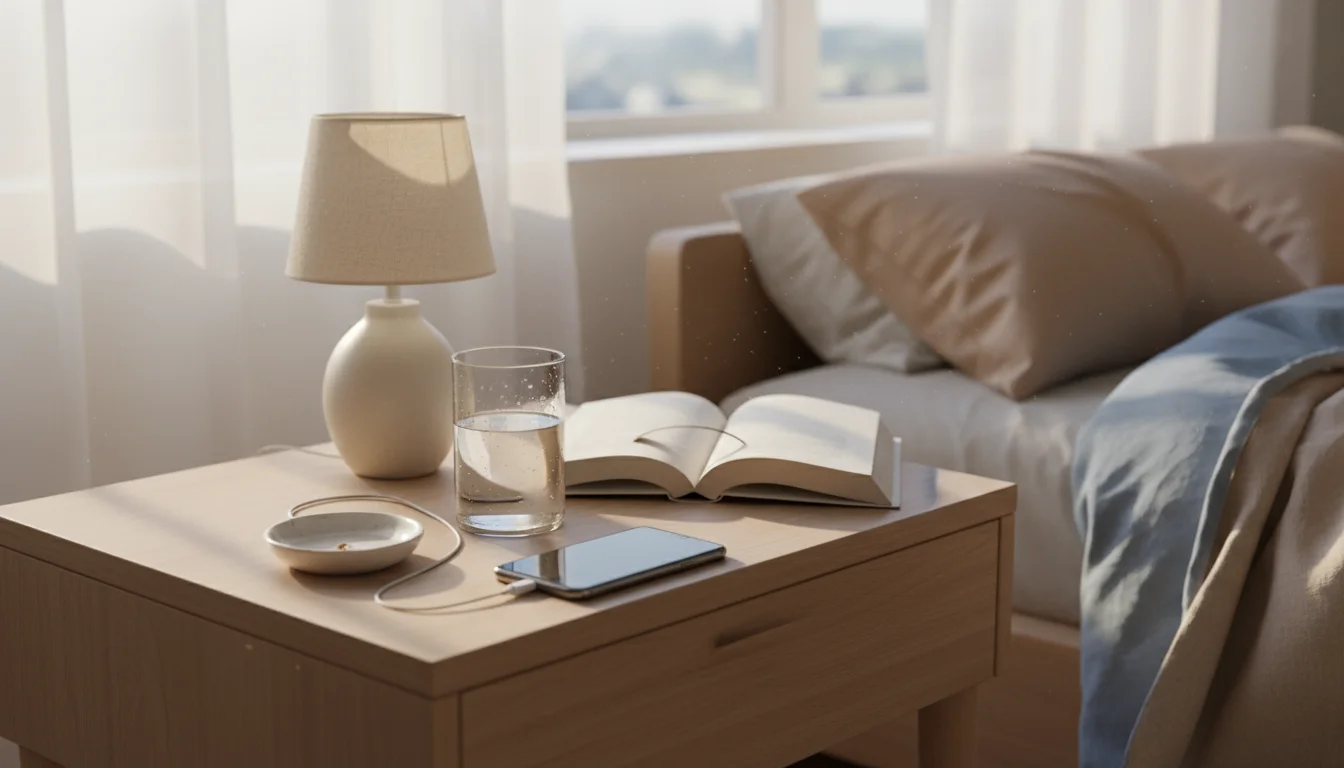
Reclaiming Your Nightstands
Your nightstand should promote relaxation, not distraction. A cluttered nightstand acts as a visual siren, pulling your attention away from rest. Aim for functionality and minimalism:
- Clear the Surface: Remove everything from your nightstand. Wipe it down thoroughly.
- Essential Items Only: Return only items you truly need and use regularly. This might include a lamp, a book you are currently reading, a glass of water, and perhaps a small dish for jewelry or your phone.
- Drawer Declutter: If your nightstand has drawers, apply the same “empty, sort, keep” method. These drawers often accumulate old papers, pens that do not work, or unused gadgets. Keep only truly necessary items, such as hand lotion, a sleep mask, or a notebook and pen.
- Charging Station: If you charge electronics here, consider a small charging hub or cord organizers to keep cables tidy and out of sight.
By creating clear “zones,” which are designated areas for specific items or activities, you reduce mental clutter and make it easier to maintain an organized bedroom.

Day 2: Sunday Morning – Under the Bed and Hidden Spots
These oft-forgotten areas become prime real estate for accumulating unused items. Addressing them is crucial for a complete `bedroom declutter`.

Under the Bed Storage Solutions
The space under your bed offers significant storage potential, but without organization, it quickly turns into a dusty abyss. Clear everything out from under your bed. This is a common dumping ground for seasonal clothing, extra bedding, or sentimental items.
- Sort and Discard: Apply the “Four-Box Method” to everything you pull out. Be honest about what you are storing. Do you really need those old college textbooks or holiday decorations in your bedroom?
- Clean Thoroughly: Once empty, vacuum and clean under your bed. This is often the dustiest part of your room.
- Smart Storage: Use clear, lidded containers for items you decide to keep under the bed. These protect against dust and allow you to see contents easily. Opt for flat, rolling containers designed specifically for under-bed storage. This space works best for seasonal clothing, extra linens, or items you access infrequently.

Overlooked Corners and Shelves
Now, expand your focus to other hidden or neglected areas:
- Bookcases and Shelves: Go through books, DVDs, or decorative items. Donate books you have read and will not reread. Consider digitizing old media. Dust shelves before returning curated items. The goal is to display items you truly love or use, not just fill space.
- Top of Dressers/Wardrobes: These surfaces often become temporary homes for things that lack a permanent spot. Clear them completely and return only necessary items, keeping surfaces minimal and clean.
- Behind Doors: Use an over-the-door organizer for shoes, accessories, or even cleaning supplies if space is tight. Make sure it adds functionality without looking visually chaotic.
- Window Sills: These areas can attract small trinkets, empty cups, or charging cords. Keep them clear to allow light in and maintain a clean line.

Day 2: Sunday Afternoon – Surfaces, Decor, and Final Touches
This is the exciting part: seeing your `weekend declutter project` come to life and adding the finishing touches that create a truly serene space. You have done the hard work; now enjoy the rewards.

Curating Your Decor
A calm bedroom embraces simplicity. Too many decorative items can contribute to visual clutter, undermining your hard work. Look at each decorative item critically:
- Does it bring you joy or serve a purpose? If not, consider donating or relocating it.
- Are surfaces clear? Aim for minimal items on dressers, nightstands, and window sills. One or two meaningful pieces are often more impactful than many small trinkets.
- Artwork and Photos: Display photos and artwork that evoke positive feelings. Ensure frames are dusted and hung securely.

The Deep Clean: A Breath of Fresh Air
Once you have decluttered all areas, it is time for a thorough cleaning. This step truly revitalizes your space and makes your hard work shine.
- Dust Everything: Start from the top down. Dust ceiling fans, light fixtures, tops of furniture, shelves, and window sills. Use a microfiber cloth for effective dust removal.
- Wipe Down Surfaces: Clean all furniture surfaces, including your bed frame, dressers, and nightstands.
- Clean Windows and Mirrors: Polish mirrors and windows for a streak-free shine.
- Vacuum/Sweep Floors: Vacuum carpets and rugs, or sweep and mop hard floors. Move furniture where possible to get into hidden corners.
- Change Bedding: Strip your bed and put on fresh, clean sheets. This is the ultimate reward for a decluttered bedroom.
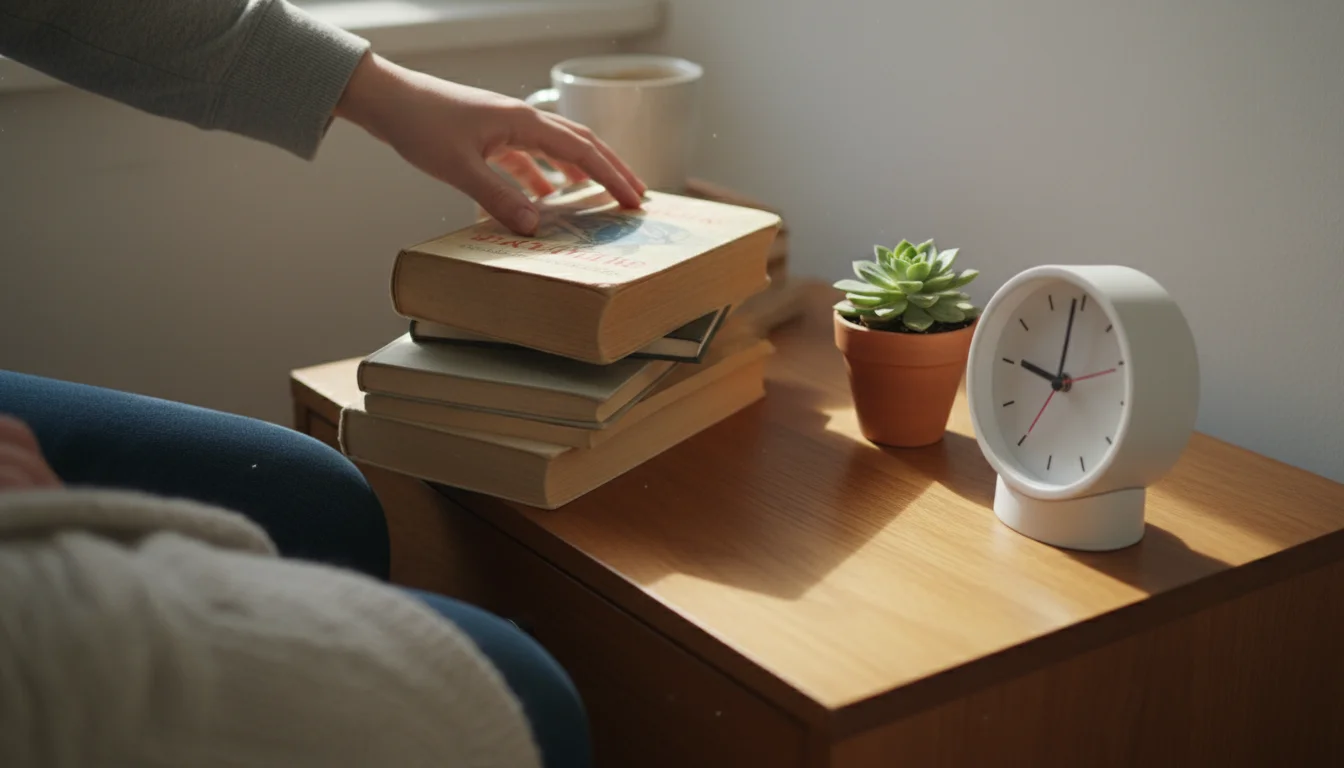
Maintaining Your Decluttered Bedroom: Realistic Habits
The weekend declutter is a fantastic start, but maintaining your newly organized bedroom requires consistent, small efforts. Realistic habits prevent clutter from creeping back.
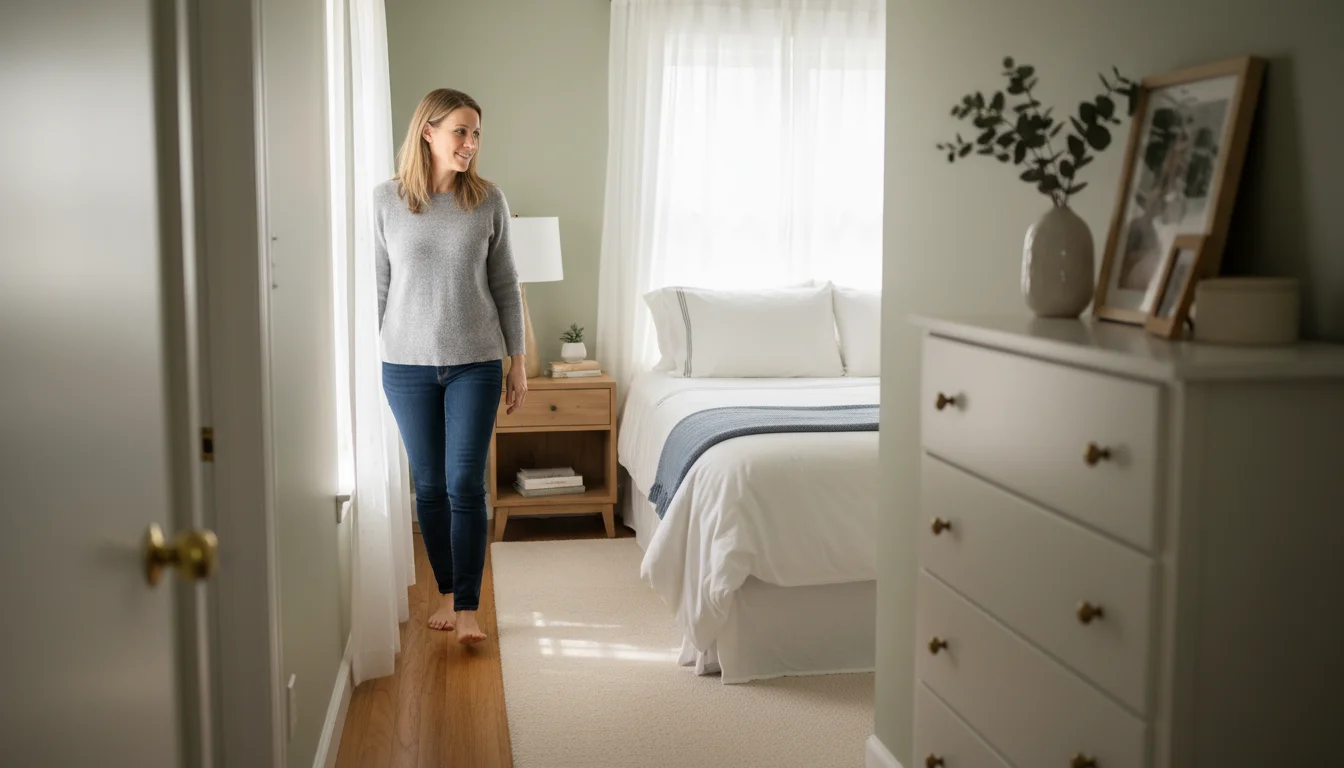
The Daily Reset (5-10 Minutes)
Adopt a daily habit of a quick tidy-up. Before you leave the room in the morning or before you go to bed, spend 5-10 minutes on these tasks:
- Make your bed.
- Put away any clothes not in the hamper.
- Clear your nightstand.
- Return items to their designated homes (e.g., put away books, magazines).
This prevents small messes from snowballing into overwhelming clutter.

The “One-In, One-Out” Rule
This simple rule is a powerful preventative measure. When you buy a new item, especially clothing, commit to getting rid of an old one. This ensures your possessions do not grow unchecked, helping you manage your wardrobe and prevent dresser drawers from overflowing.

Scheduled Mini-Declutters
Beyond the daily reset, plan for seasonal mini-declutters. Align this with your seasonal guide content strategy. For example, during spring, review your closet for items you did not wear all winter. In the fall, assess summer items. A quick, focused review every few months keeps things from accumulating. Set a reminder on your calendar for these check-ins.
Use Vertical Space and Smart Storage
Maximize your space, especially in smaller bedrooms. Utilize vertical space with shelves, wall-mounted organizers, or taller dressers. Multi-functional furniture, like a storage ottoman or a bed with built-in drawers, offers clever solutions without adding visual bulk. Explore resources from sites like IKEA Home Organization for clever solutions that fit various budgets and styles.
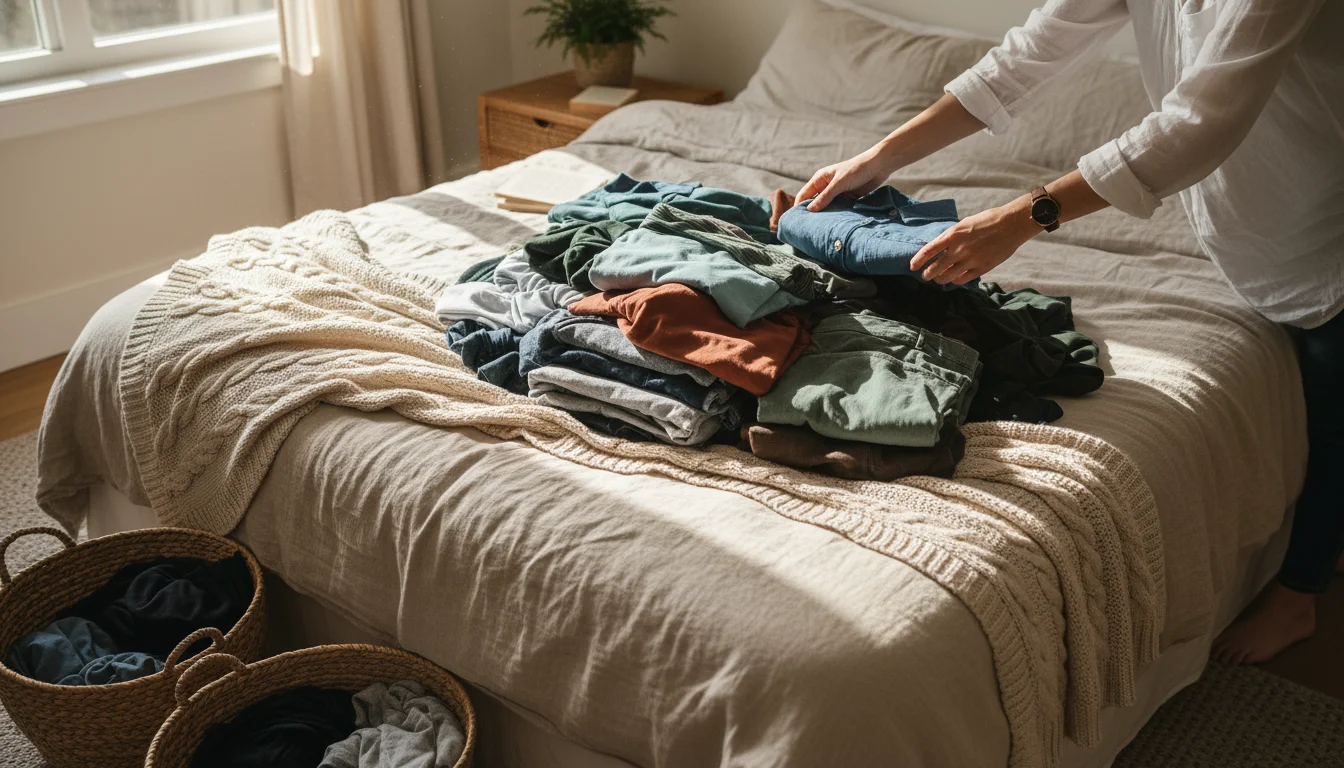
Troubleshooting Common Decluttering Roadblocks
Even with a clear plan, you might encounter specific challenges. Here are practical solutions to common hurdles during your `organizing bedroom` efforts.

Sentimental Items
Sentimental items often pose the biggest challenge. You do not want to part with memories. Designate a single “memory box” for your most cherished keepsakes. Store photos, letters, and small mementos there. Anything that does not fit into the box needs careful reconsideration. Take a picture of an item if the memory is more important than the physical object. This allows you to keep the sentiment without the clutter.
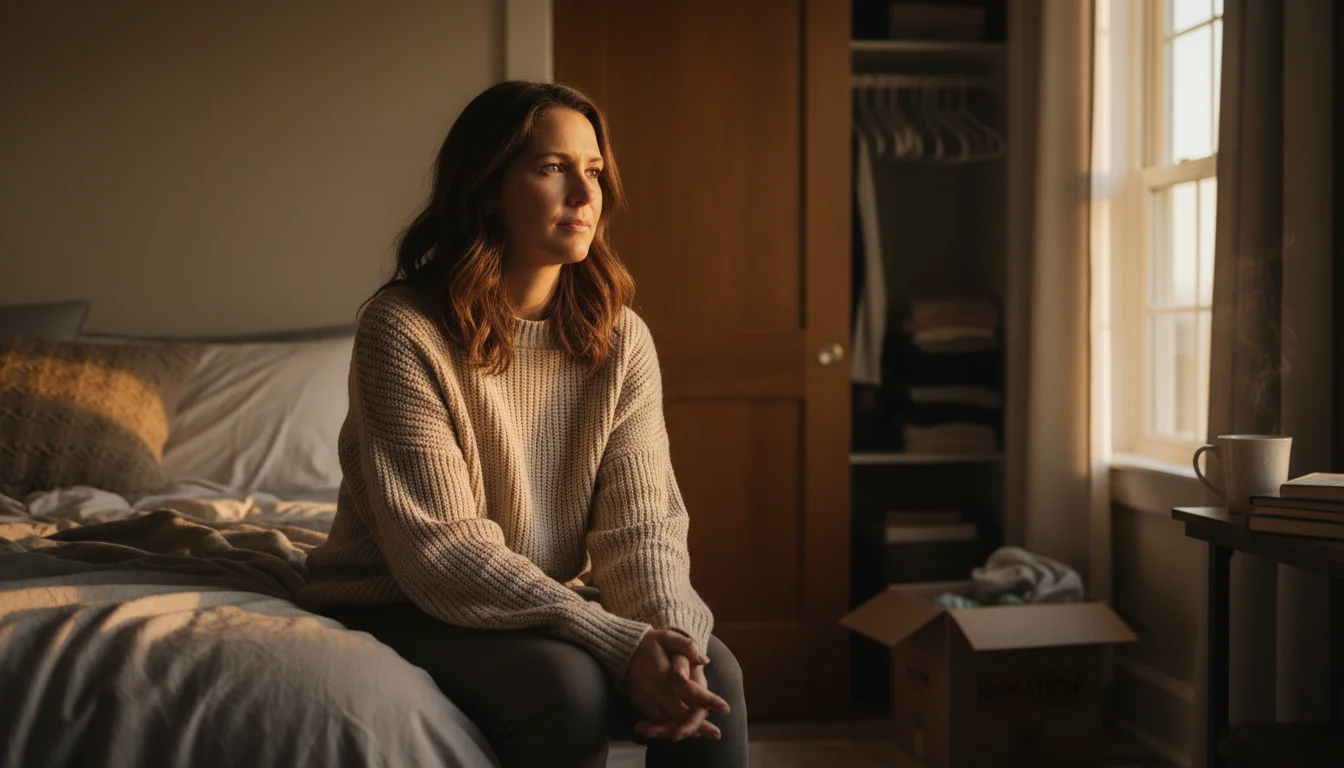
Feeling Overwhelmed
If you feel overwhelmed, stop and take a break. Break the task down further. Instead of “decluttering the closet,” focus on “decluttering one shelf” or “sorting all my shirts.” Set a timer for just 15-20 minutes. Focused, short bursts are more effective than prolonged, agonizing sessions.
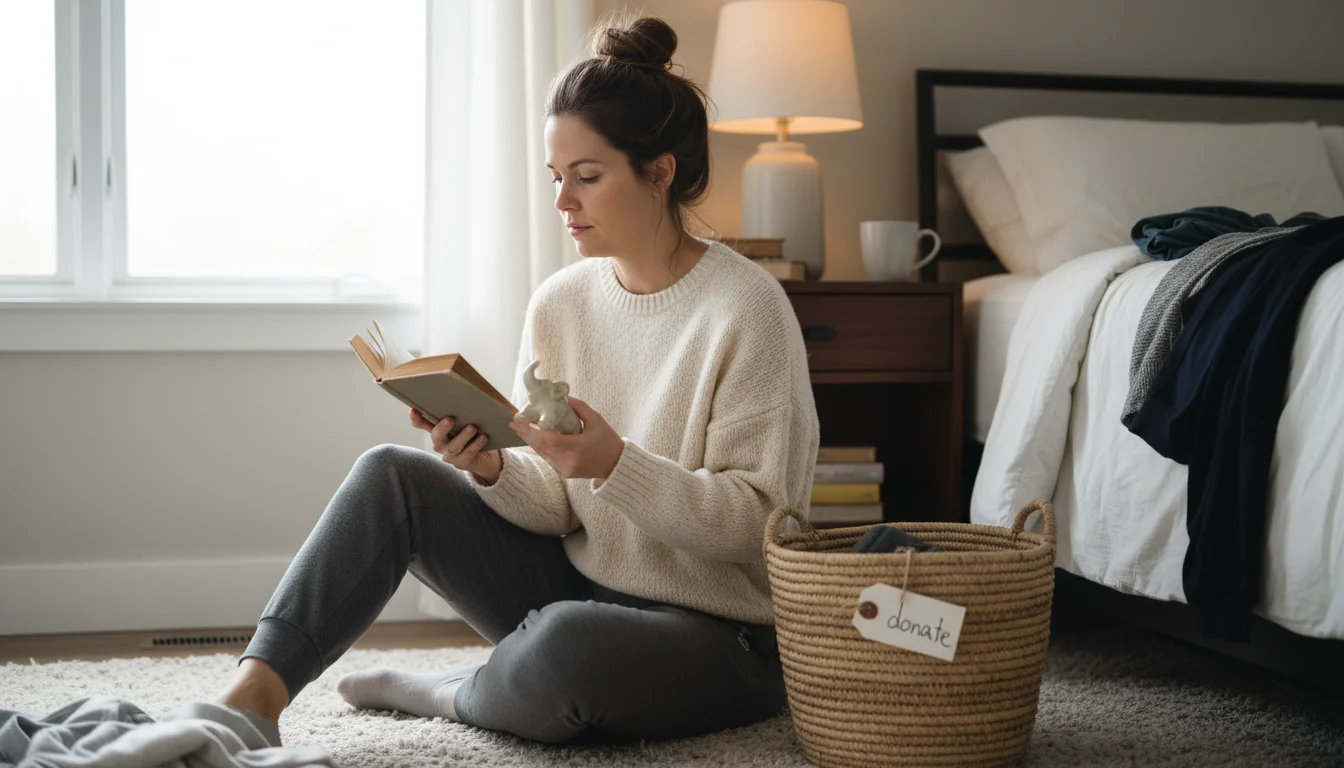
Limited Time or Energy
Life gets busy, and energy levels fluctuate. If you cannot dedicate a full weekend, spread the project out. Focus on one zone per evening over a week. For example, Monday: closet, Tuesday: dresser, Wednesday: nightstands, and so on. Even 30 minutes of focused effort each day adds up to significant progress.

Small Spaces
Small bedrooms require clever strategies. Embrace vertical storage with wall shelves, tall dressers, or over-the-door organizers. Use under-bed storage strategically for off-season items. Consider multi-functional furniture, such as a bed with built-in drawers or a desk that folds away. Every item you keep in a small space needs to earn its place by being genuinely useful or deeply loved.
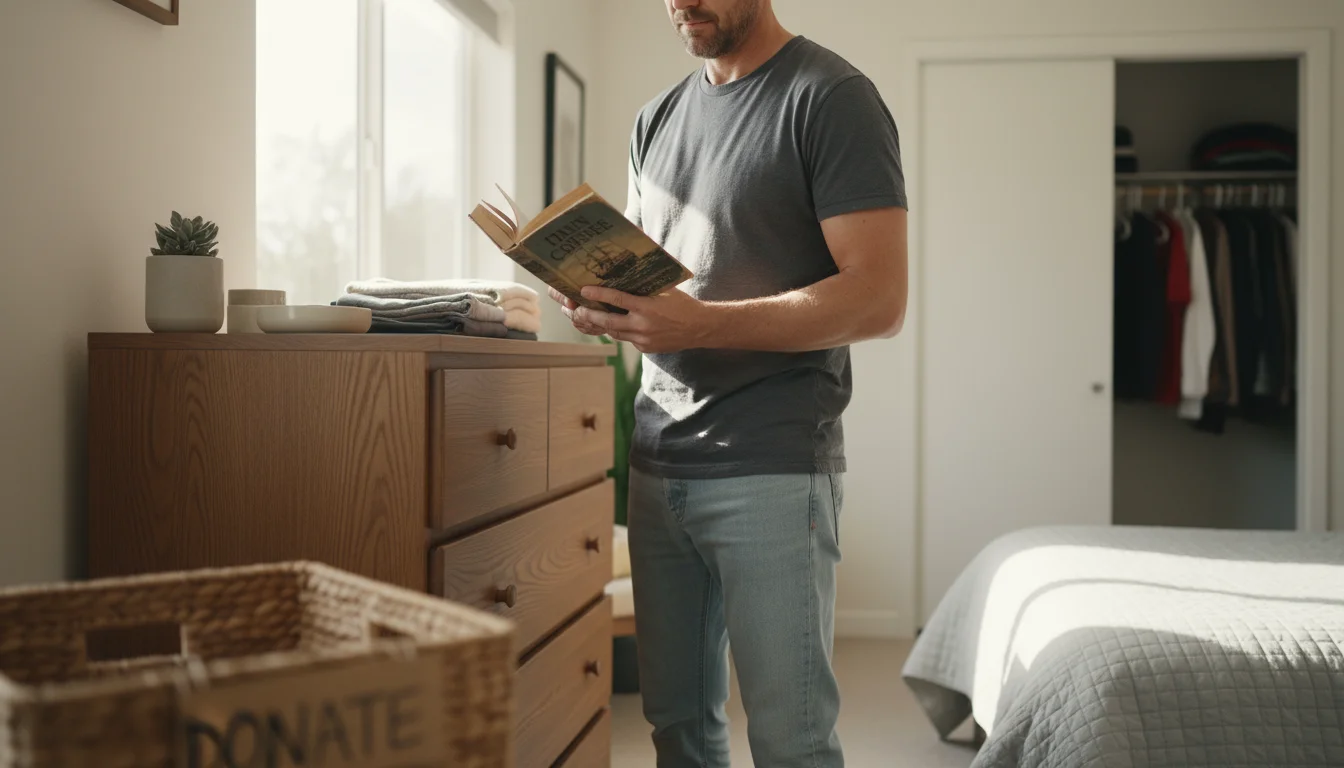
Frequently Asked Questions
What is the best way to start a bedroom declutter when I feel completely overwhelmed?
Begin with the easiest area first to build momentum. Pick a drawer, your nightstand, or a small section of your closet. Focus on just one category of items, like socks or T-shirts. Setting a timer for 15-20 minutes helps keep the task from feeling too daunting. Once that small area is complete, you will feel more motivated to tackle the next.
How do I decide what to keep when everything feels important?
Ask yourself three key questions for each item: “Have I used this in the last year (excluding seasonal items)?” “Do I genuinely love and feel good about this item?” “Does this item support the purpose of my bedroom (rest, relaxation, dressing)?” If the answer to these questions is no, consider letting it go. For truly sentimental items, designate one “memory box” to keep them contained.
What if my partner or roommate does not want to declutter their side of the room?
Focus on your own areas first. Lead by example and respect their boundaries. If there are shared spaces, like a common dresser or shelf, communicate openly about your desire for a more organized room. Suggest working together on these shared “zones” and finding compromises that benefit both of you. The goal is improvement, not control.
Should I buy organizing products before I declutter?
No, declutter first. You will only know what storage solutions you truly need once you have pared down your possessions. Buying bins or dividers beforehand often leads to purchasing the wrong sizes or buying things you do not need, creating more clutter. Declutter, then measure, then buy.
For expert home organization guidance, visit
Institute for Challenging Disorganization, Consumer Reports — Home, This Old House, Family Handyman and Bob Vila.
Disclaimer: This article is for informational purposes only and is not a substitute for professional advice. Consult professional organizers or specialists for personalized recommendations.
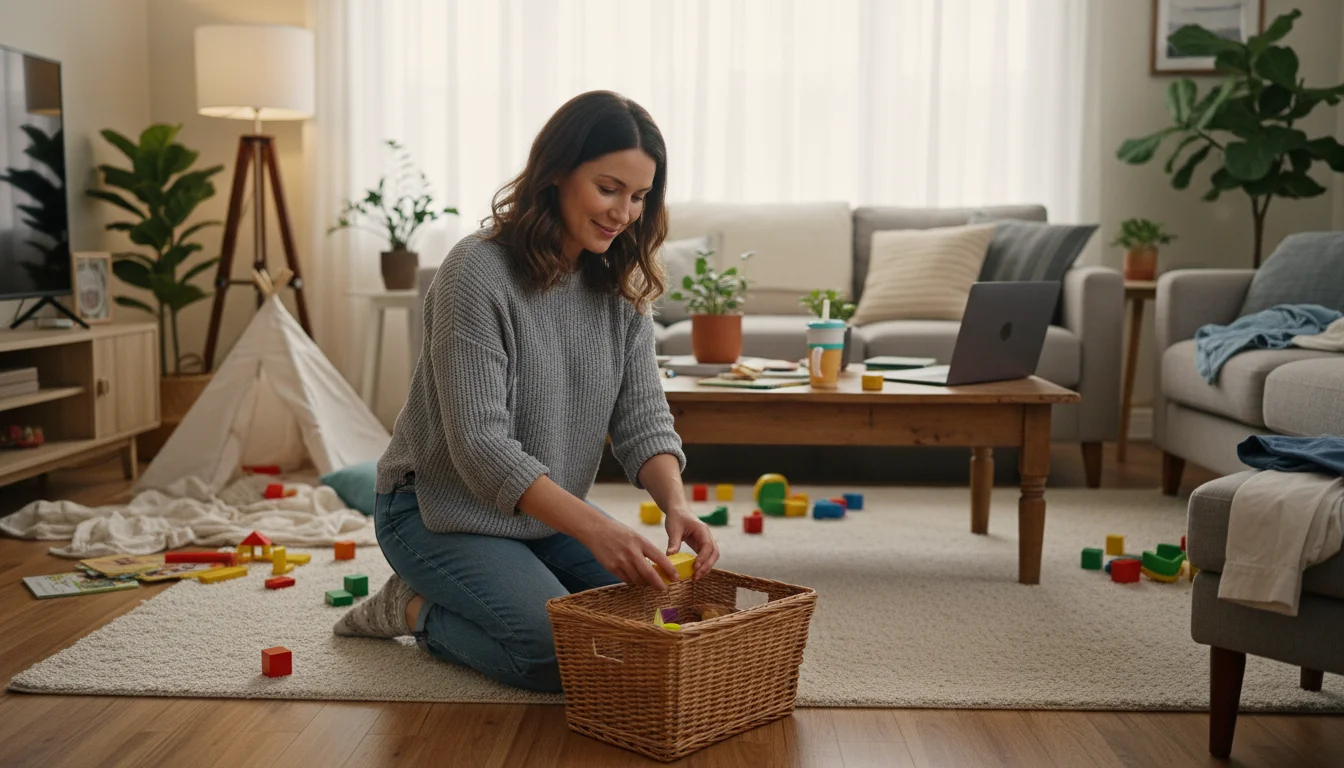
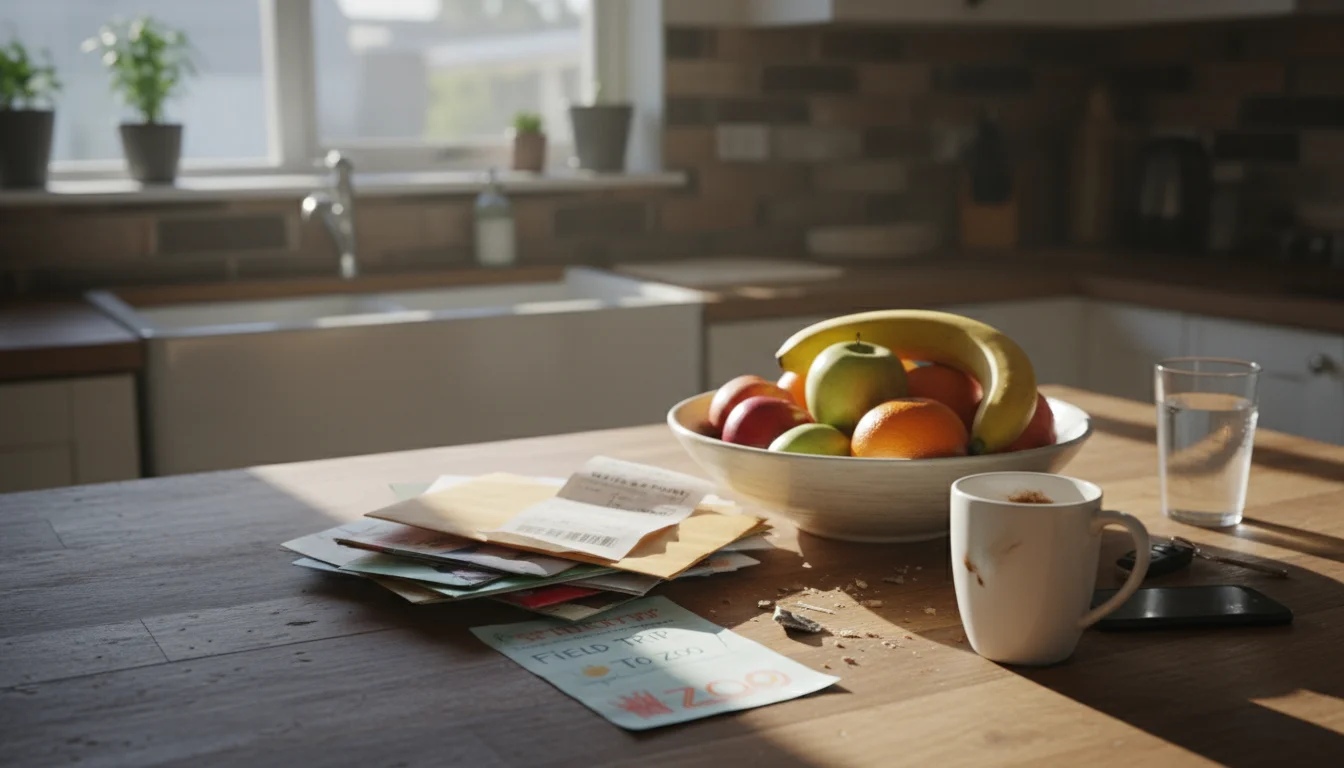
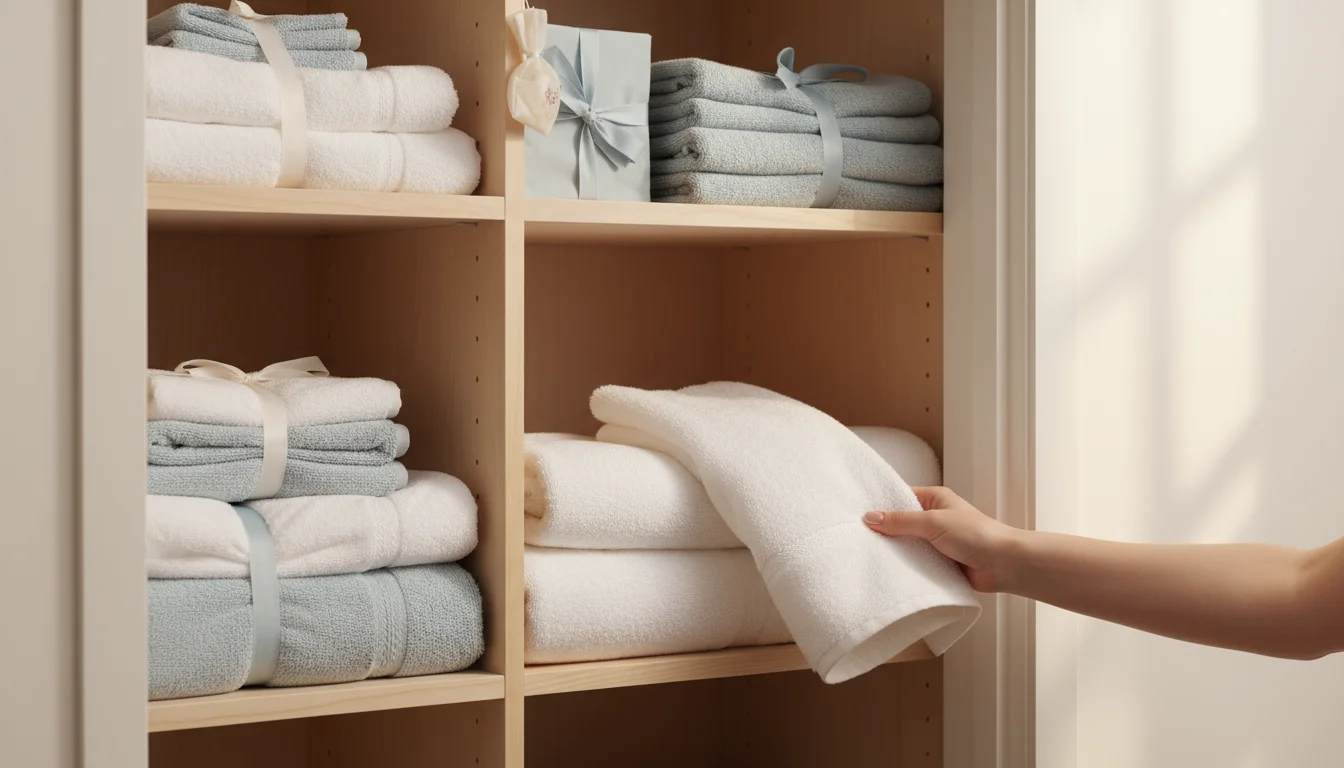

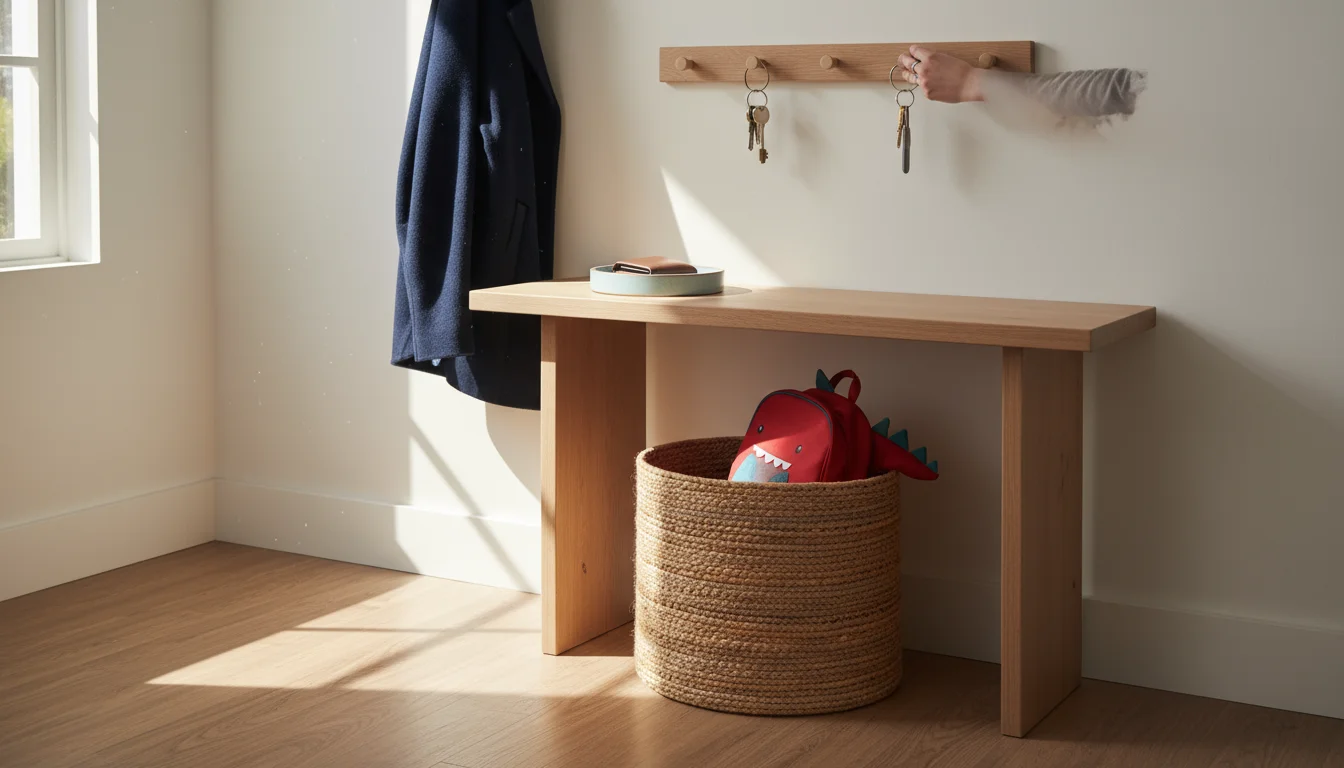


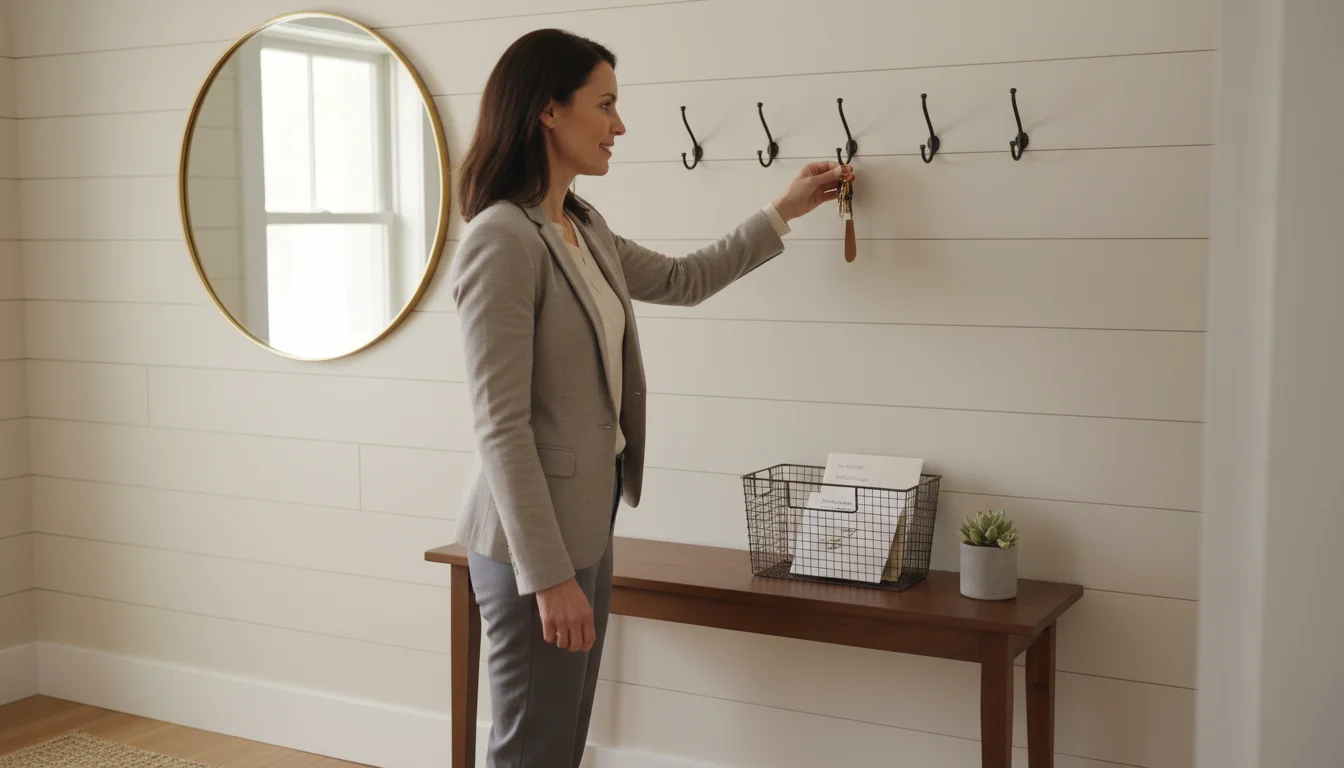

Leave a Reply